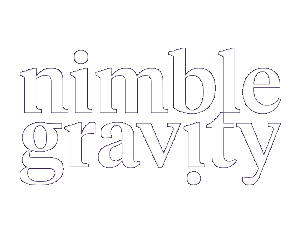When people hear the term "psychological safety," the reaction is often dismissive: "that sounds too touchy-feely" or even, "that sounds weak." But regardless of how it lands emotionally, psychological safety is one of the most powerful—and proven—drivers of innovation, retention, and yes, profits.
A Lesson from the Dish Pit
Years ago, I picked up a second job as a dishwasher—low stress, no customer interaction, just clock in and clock out. Perfect to pay off some bills I wanted out of my life at the time, or so I thought.
On my first shift, the two cooks on duty tried to dump all their closing tasks on me—grill cleaning, food storage, even some front-of-house duties. None of these were in my job description, and I knew no one would have my back. So, I walked out. No drama. Just clarity.
I didn’t leave because I couldn’t handle the work (I previously had run an entire very busy kitchen by myself for multiple 12-hour shifts, for years). I left because I could see the system was broken. Fear, ambiguity, and manipulation were running the show. That moment taught me something I now see in many organizations:
People will only speak up, contribute, or stay engaged when they feel safe to do so.
I also recognize in this situation that I had a privilege, as a second job, it was an extra source of income, not my only source. That provided me with an option that many people do not have. That allowed me the personal psychological safety and an ability to act decisively. For most people, when similar situations occur, they likely don’t have that privilege – and that’s when things get existential and the threat level to one’s “survival” escalates and the brain shuts down, goes into a fear based operating mode, and people don’t react well, they don’t stay engaged, they don’t contribute well, and more. We all need psychological safety to perform at our best.
What Is Psychological Safety, really?
Harvard professor Amy Edmondson defines it as:
"The belief that you won’t be punished or humiliated for speaking up with ideas, questions, concerns, or mistakes, and that the team is safe for interpersonal risk-taking."
Psychological safety doesn’t mean eliminating emotion or conflict. It means creating an environment where honesty can live without fear. Where directness doesn’t have to be demeaning. Where accountability doesn’t rely on shame—or guilt.
In psychologically unsafe environments, yelling, sarcasm, and subtle threats might create compliance—but at a cost. People withdraw. Ideas shrink. Trust evaporates.
Inconsistency also undermines psychological safety
While not as immediately and as overtly damaging as yelling, bullying, or public shaming, inconsistent feedback or direction is just as damaging long term. This is a major, and often unrecognized, contributor to low psychological safety. When feedback or direction constantly shifts, especially from the same person or team, it creates confusion, self-doubt, and paralysis.
Why does inconsistency undermine psychological safety?
- It creates cognitive dissonance
When people receive mixed messages, they must try to reconcile them (the brain demands order). When expectations shift or feedback is contradictory people doubt their own judgement. This erodes confidence.
- It leads to indecisiveness and withdrawal
When nothing feels like the right thing to do, that’s exactly what happens—nothing. People are constantly second-guessing themselves. A frequent defensive mechanism is then to disengage to avoid conflict.
- It trains people to avoid risk
When people don’t know exactly what’s valued or “expected” of them, then they stay as safe as possible by employing their own control on the situation by doing less or only doing exactly what was last asked of them. Unfortunately, that results in a lack of things that every business values—innovation, risk-taking, creativity, actual ownership.
- It signals that it’s not safe to ask for clarity
When inconsistency goes unaddressed, especially from top leaders, it sends a message. That message is: “Just deal with it.” That’s not a place where it’s safe to ask questions, to have healthy debates, or for feedback loops to feel like they matter.
People can’t do their best work if they’re constantly decoding mixed signals. Clarity is kindness—and consistency is a form of safety.
Tough vs. Toxic
Low Safety
High Safety
"This is garbage."
"This misses the mark—let’s improve it."
"Why didn't you..."
"What led you to that decision?"
Public shaming
Private feedback and support
You can be honest without being harsh. In fact, the best leaders I know are radically candid—and radically kind.
The Chemotherapy Analogy
Chemotherapy is a powerful intervention—but no one would prescribe it every day for life. Meanness, sarcasm, public shaming, and fear-based leadership are the same. They might kill off short-term issues, but they poison the culture over time.
No one thrives on constant chemo. So why should we expect teams to?
The Business Case: Why Psychological Safety Is Strategic
It’s not just a feel-good idea. Psychological safety delivers measurable outcomes:
- Accelerate innovation
Teams take more interpersonal risks without fear of punishment.
Edmondson, The Fearless Organization - Improve learning and adaptability
Reduces fear-driven silence and supports knowledge-sharing.
Edmondson, "Psychological Safety and Learning Behavior in Work Teams" - Enable faster course-correction
Teams identify and address problems earlier.
Publisher’s Page for The Fearless Organization - Drive better team performance
Google’s Project Aristotle found it was the #1 predictor of team success.
Google re:Work: Project Aristotle - Reduce silence and turnover
Unsafe environments drive attrition and burnout.
HBS Online - Attract and retain top talent
Inclusive, safe cultures keep high performers engaged.
McKinsey: Psychological Safety
10 Practical Ways to Build Psychological Safety (At Any Level)
- Ask More (and Better) Questions
"What are we missing?" "Who sees it differently?" - Admit What You Don’t Know
Model vulnerability. It opens the door for others to speak. - Thank the Messenger
Especially when the news is hard. - Clarify Roles & Expectations
Ambiguity breeds anxiety. Clarity creates calm. - Normalize Mistakes
"Let’s get it wrong early so we can get it right faster." - Make Problems a Team Sport
Invite others into problem-solving. - Hold Off on Judgment
Let ideas land before evaluating them. - Encourage Respectful Dissent
Disagreement should be part of the process. - Watch Your Reaction Face
Nonverbal cues matter more than we think. - Celebrate Safety
Recognize those who model candor and listening.
Want to Make It a Company Strategy?
If you're serious about moving faster, innovating smarter, and retaining great people, psychological safety isn’t optional.
Here are five things you can start doing:
- Include psychological safety in engagement surveys
- Assess team dynamics before major initiatives
- Train leaders to ask better questions
- Read, as a group, The Fearless Organization by Amy Edmondson
- Watch, with your teams, Edmondson’s TEDx talk or explore Google’s Project Aristotle
Strategy Starts with Safety
Big ideas fail in unsafe environments. But when people feel free to speak, question, and challenge—we get to the truth faster. And businesses move forward, together.
Curious about your own level of psychological safety? Take this free personal assessment:
https://fearlessorganizationscan.com/engage/free-personal-psychological-safety-survey
Want to measure the psychological safety of a team? Check here: https://fearlessorganizationscan.com/engage/test-the-psychological-safety-in-your-team
If you want to move fast, innovate, adapt, and get to the truth faster, we’re here to help you unlock the value that comes with those actions.




